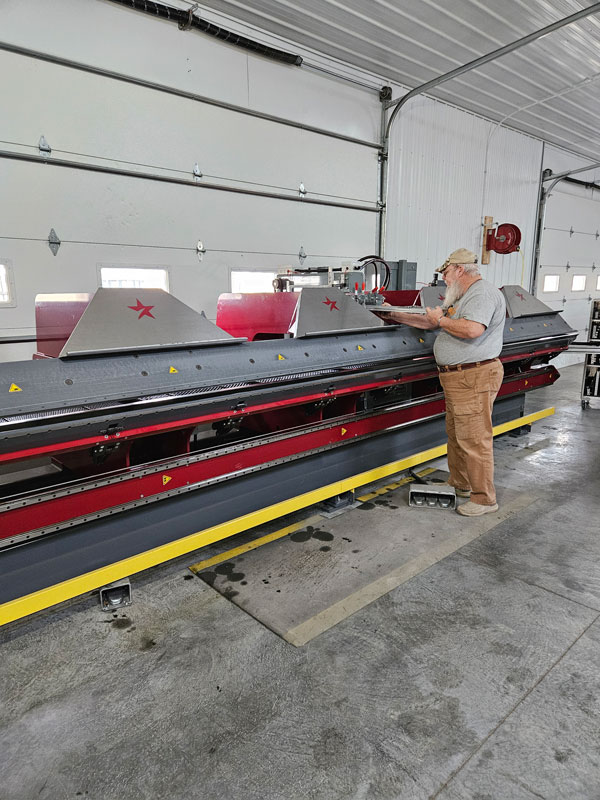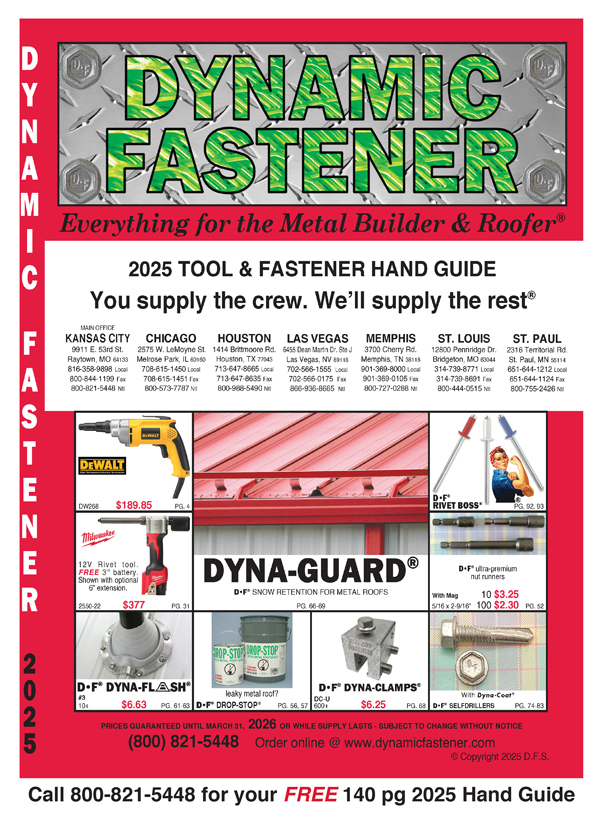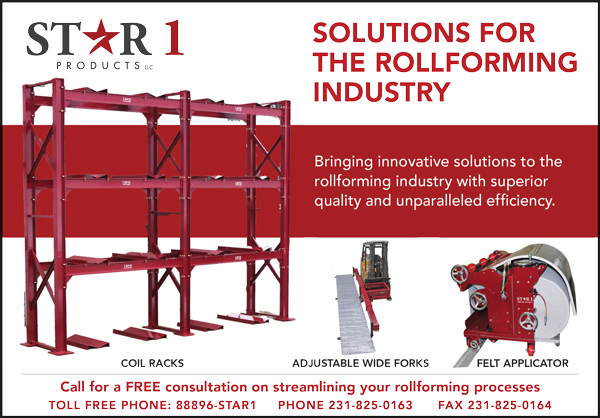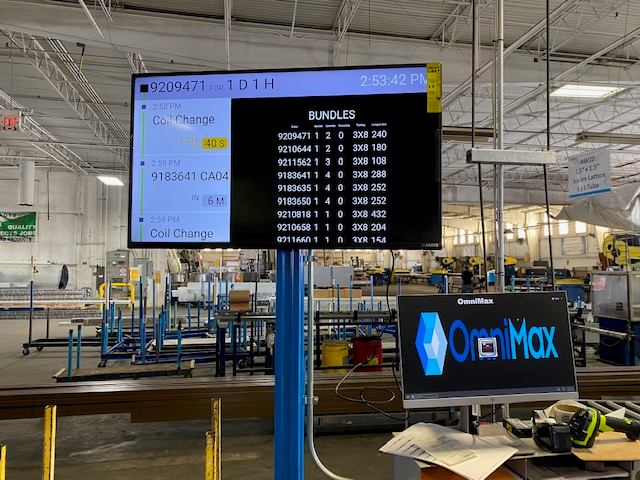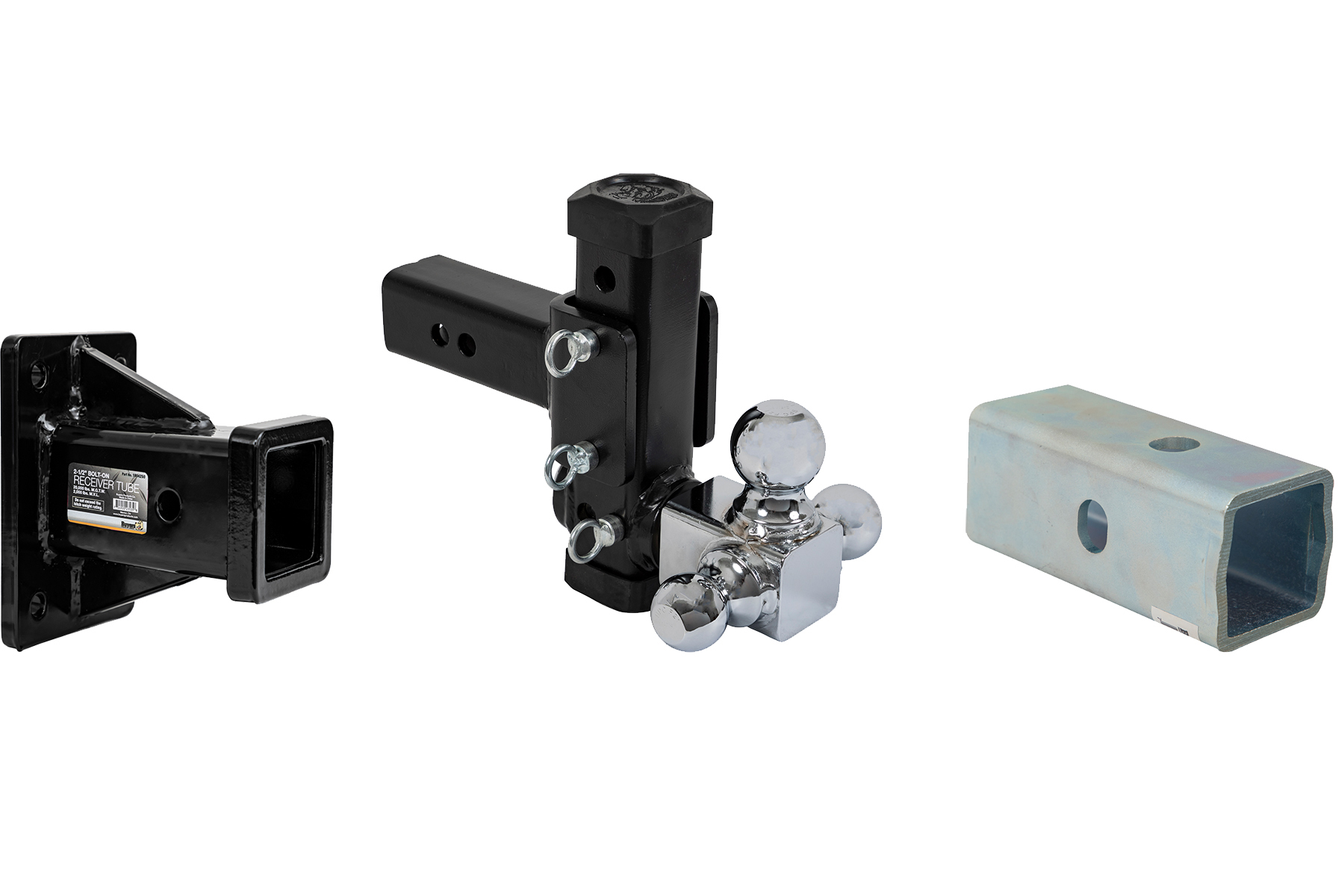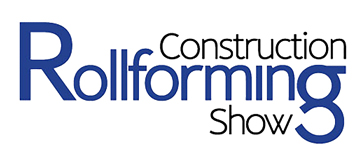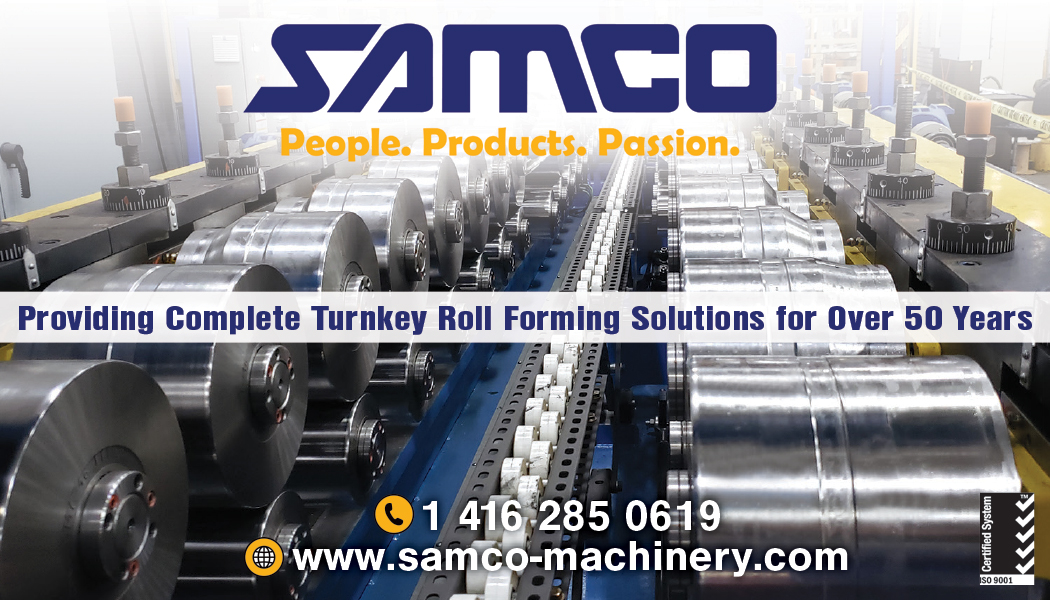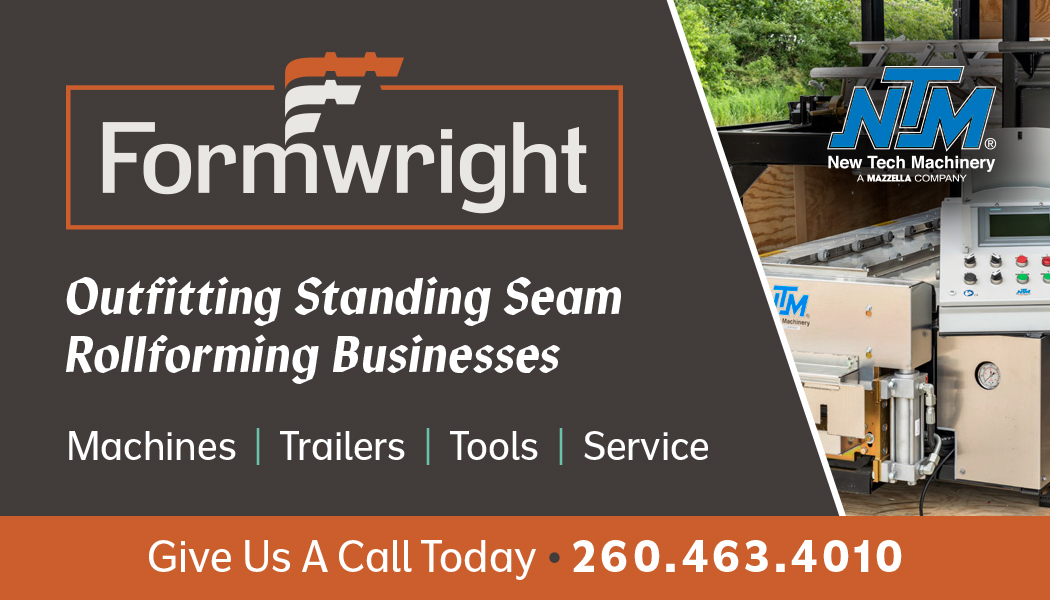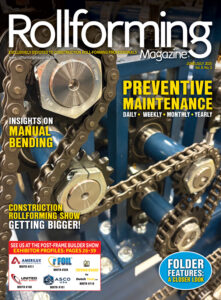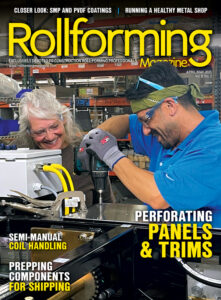By Karen Knapstein
Improvements in manufacturing technology to make production faster and more accurate doesn’t necessarily mean the advancements are about faster computers and software. Star 1 Products, LLC in McBain, Michigan, which specializes in supplying businesses that forgo the use of computerized equipment, is now manufacturing an air-over-hydraulic folder that enables the user to make trims at a speed that was not thought possible without computers. In fact, some users say the speed at which a trained worker makes trims using the air-over-hydraulic folder is on par with machines that are computer controlled.
Nelson Miller of Star 1 Products says the air-over-hydraulic concept has been used for about 10 years. His company has only recently started making the machines, so they’ve only been available commercially for about a year.
The Star 1 Trim Folder is a low-tech option for those who choose to live without computers yet want a high-quality folder. It’s made using a U.S.-assembled, German-made brake. Nelson said they chose this particular brake because the apron sweeps back to home position at an angle, making it easier for the operator to place the trim piece into the machine. Star 1 buys the brake and adds the pneumatic and hydraulic control system.
Air Logic & Templates
Powered by an outside power source such as a diesel power unit, air-over-hydraulic brakes use a template system to repeatedly produce the same piece of trim quickly and accurately. Once the template is set, switching profiles is a matter of switching out templates. A different template is used for each profile.
“The way the machine works is you position the metal up against the backstop and push the pedal to start the cycle,” Nelson explained; “the clamp will close and the apron will make the bend that the template dictates. The apron will then go to the home position, the clamp will open, and the template will move forward one step. The back gauge will then move forward or backward (as dictated by the template) until it comes to rest against the next stop.
The machine will then wait until the operator pushes the foot pedal to activate the second bend. Holding the trim piece against the back gauge, the operator presses the start pedal and the sequence repeats. This continues until the part is complete, at which point the template resets itself automatically
“For every bend you make, there’s one row in the template,” he continued. So if you need to make three bends in the trim, the template will have three rows of stops. The top side of the template controls the bend angle while the bottom side controls the back gauge.
Nelson said the metal trim market started out with the basics like J’s, Corners, and Ridge Caps, but now there are different rakes and specialty trims, which can make for some complicated bending. The template system allows operators to make complicated trims with multiple bends efficiently and accurately. Since the template can include up to 18 lines, the folder “can bend a piece of trim that has 18 different bends or hems or different things like that,” he said.
Nelson’s brother Robert, who works on design and manufacturing at Star 1 Products, described the technology: “Templates are the ‘computer chip.’ The operator sets up the template with the Bend Angle, Back Gauge, Open Hem, and Clamp Only. The machine then ‘reads’ the template. Templates are fully adjustable for each profile.”
Before this type of equipment, Nelson recalled, if you needed 40 pieces of a specific trim, you’d make the first bend on all 40 pieces, setting each piece aside as you did it. “Then you’d reset the back gauge and bend the next angle and do all 40 pieces again,” he said. You might end up handling each piece multiple times, depending on the number of bends needed.
The template system speeds up production significantly. “Before, they may have had to move a piece five times (or more). But with the template system you only handle the piece once and do all the bends before placing it into the completed rack,” Nelson explained.
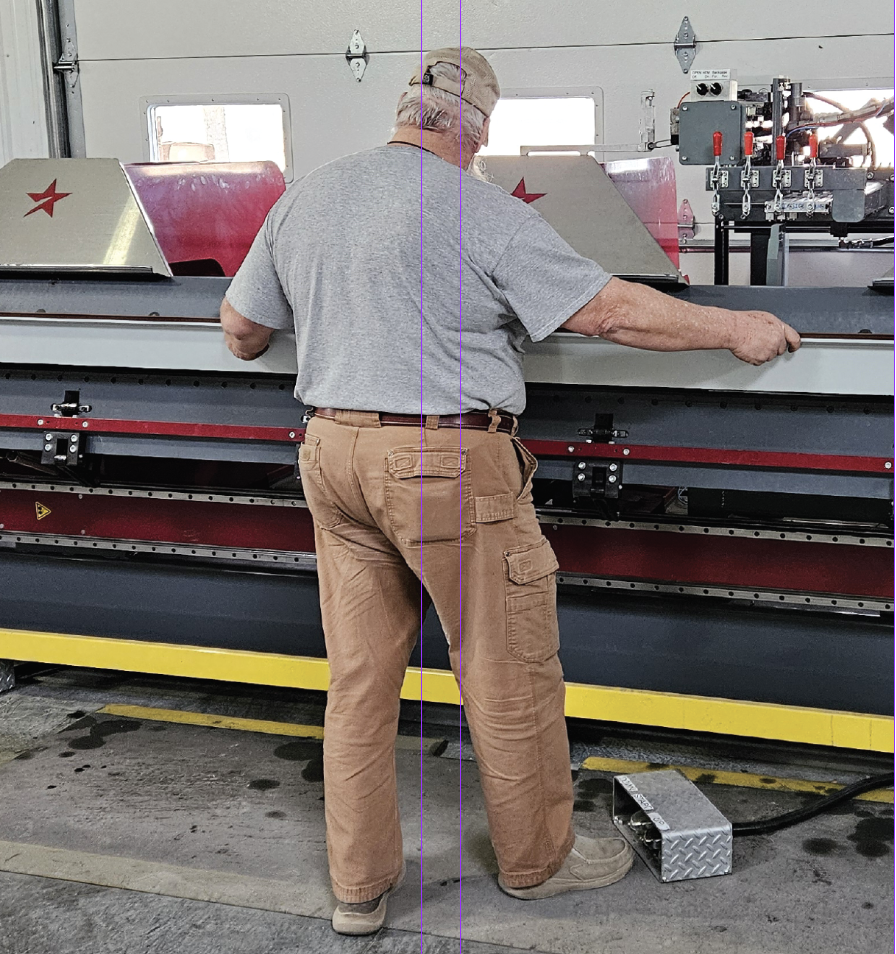
The Star 1 Trim Folder also comes with a custom template that enables the user to set the stops for any trim piece that a customer may order. The custom template has a measuring tape embedded alongside each slot on the bottom side. The tape measure is used to set the stops. “It’s fairly simple,” said Nelson. “Using an allen wrench, you loosen, move, and tighten it back up. On the top side you have the degrees marked from 30° through 130°. These are reference points. If your first bend needs to be at 90°, you move the bend stop in that row to the 90° mark. You repeat this for each bend in the part.”
Robert added: “Templates can be set up for custom orders for the day by someone other than the operator so the operator simply grabs the appropriate template and doesn’t need to slow production.”
The next day somebody may want something else. The same custom template can be reused. “Or, some shops may want extra templates so they can set up a template to do a custom trim again and again,” Nelson said. “For one-off projects you use the custom template.”
“The speed is comparable to the CNC versions on the market,” added Robert. A computer-aided machine has the ability to store unlimited custom trims in memory. With the template system you have a few custom templates that you readjust each time for your one-time custom trim orders. It requires more template setup and brain work than a computer (which is actually good for your health).”
The air logic controls are by Telemechanique, which is a division of Parker. The controls are very dependable. “It seems to be a very good quality of air logic,” said Nelson. “It works well. But it’s always important that there’s no contaminants like moisture or oil going into the air line. Dry, clean air is very important with air-logic controls.”
Robert added, “The air logic system we use is a high-quality system that, when fed clean, dry air, is ‘bomb proof.’ They have been proven in heavy daily use for many years.
“While air logic may seem somewhat complicated at first, it is much simpler than computer systems and therefore easier for the operator to troubleshoot without outside help.”
Maintaining the hydraulics is also important for accurate bending. “Accuracy issues usually come from inconsistent hydraulic oil temperatures,” explained Robert. “We recommend installing equipment that will maintain a consistent oil temp, and therefore consistent accuracy.”
How It Began
Star 1 has been making the air-over-hydraulic trim folders for about a year, but the folder was actually developed about 10 years ago by Ray Wagler and his team at Royal Oak Metal Sales, which included Jerry Schrock, who was in the office doing sales, Jacob Mishler, who was running the roll form side of the shop, and Lavern Jantzi, who was their head trim man.
“The driving force was to make an alternative bending option available to people who choose to avoid the use of computers,” Ray said.
Ray, who first started in the metal forming business in 2010, said he made his first modification to a 10’ Roper Whitney hand brake. “I wasn’t in [the business] very long before I built a back gauge on it,” he recalled. “That was my first try at building a brake with some form of back gauge.” Before that, they’d have to get a tape out and make marks on the trim flat. “We would have to measure where each bend would go on each piece of trim. It was very time consuming and not accurate enough.”
In the winter of 2011/spring of 2012, his company bought a used 16 ft. Chicago brake. “We automated it with 12-volt DC over hydraulic,” Ray recalled. “It was our first attempt at building an automated machine. We used that particular machine for about three years. We learned a lot with it.”
In the Fall of 2013, they bought a new 21’ Bradbury folder. “The four of us spent many hours discussing different aspects of the machine as we worked on the project,” recalled Ray. “Lavern and I worked on the Bradbury machine that whole winter; probably from the beginning of January until the middle of April.
“Learning to do air logic was a big part of the journey. It was our first venture that we used air logic as a control medium.
“We developed a template system because we wanted the consistency of a mechanical stop,” he continued. “A mechanical stop does not change when hydraulic oil temperature changes. Unfortunately, the bend angle does change if there is a large fluctuation in oil temp. It is important to maintain a fairly consistent hydraulic oil temperature.
“We used an aluminum template that slides into a template envelope on the machine.” To change profiles, the template is simply removed from the envelope and replaced with the one that’s needed. “Each template is clearly marked. What it makes is stamped on the template: Regular Corner, Mini Corner, Ridge Cap, etc. Now, within 30 seconds, we can go from making one profile to another. After the initial learning curve, setting up a template for a normal custom trim can be done in a matter of minutes,” explained Ray.
At the end of the 2016 season, Ray bought a German-made Variobend brake on which to build an air-over-hydraulic setup. “I like how the apron tilts back at 45° instead of being vertical. It makes it easier to insert the workpiece,” he said.
When in use, the template “tells” the machine what the next step in the sequence is and the back gauge advances or reverses as dictated by the template. In a matter of seconds, the operator is ready to make the next bend.
“And we can repeat the piece dimensionally every time. I would say it compares favorably to a computerized machine in speed, in smoothness of operation, and in accuracy,” Ray said.
Ray feels blessed with the machine development experience and at the outcome. “With everybody pooling their ideas and talents, and with God’s blessing, it worked out well.
What Others Say
Lamar Miller purchased Royal Oak Metal Sales from Ray in 2018 and moved it to Tustin, Michigan. But the Bradbury folder didn’t go with the business. “I bought the company from Ray. I bought some of the machines but not all. Ray kept the Bradbury folder,” said Lamar.
Lamar later acquired an air-over-hydraulic folder; he bought the one that Ray built on the 21’-long Variobend frame. He, too, says that since the apron goes back at a 45° angle, it’s easier to insert the stock.
When asked how using an air-over-hydraulic folder has affected the way they make trims in their metal shop, Lamar responded: “There’s no comparison. It’s way more accurate and probably three times faster than [it would be] without those controls. Maybe even more than that. We’ve got that template and that’s the key. The repeatability is invaluable. You can slide the template in a week later and the next piece you make will match dimensionally with the last piece that you made [with that template].” Whereas if you have to reset the stops every time, the repeatability is hard to achieve.
In addition to speed and accuracy, using the brake that has templated controls can make it easier to teach someone how to bend trim. Lamar explained: “He just has to know when to flip end-over-end and all that. It’s a lot easier [than using a manual brake]. But it still takes more brain work than a computerized controller for a custom piece of trim.
“Once the person that runs the brake knows what he’s doing,” he continued, “it takes about the same amount of time to set up a custom trim as a computerized controller. It runs smooth and fast. You can get a lot of speed out of it because the cam action drives the apron. On a computerized machine the oil flow is slowed down at the end of the bend to smooth out the transition into reverse. On our machine, the cam automatically slows it down as it goes from forward to reverse.”
Lamar said they added a counter about a year and a half after they got the machine. As a testament to the speed and reliability of the folder, he shared his numbers: From April 20, 2021 to the morning of Nov. 29, 2023, the machine has made 486,611 bends.
The importance of quality, speed, and repeatability can’t be overstated. Lamar said the air-over-hydraulic folder “has enabled us to compete with a computerized machine. If you’re going to do high-end residential trimmed out in metal, you need the quality that a machine like this can provide.”
First Machine Still Running Strong
In 2020, Ray sold the original Bradbury folder with air logic controls to Stephen Zook at Windy Hill Metals in Fountain City, Indiana. When asked how the folder is working for him, Steph said, “We really do like it. It’s one of the better investments we ever did in a trim line. For custom trims, it’s easy to set it and it doesn’t take long. We are actually pretty much computerless, and one nice thing about [this folder] is if there is something a little bit off we can fix it ourselves. We don’t have to wait on a technician. We can fix it and keep going.” And the settings are easy. It doesn’t take long to train someone to use it: “Just a short period of time.”
The first air-over-hydraulic folder is now 10 years old and keeps working hard every day. “That machine, as long as you work it, will keep rolling,” said Steph. “We’ve used it for a number of years. We’ve changed some parts out here and there, but that’s it. Any brake will wear out. But if it were computerized we would have had to go through a lot more than that.” Because it’s not computerized, the controls don’t have to be updated and will work the same in the future as it does today.
“We’re ready to get another one,” Steph continued. So they’re getting a new Star 1 Trim Folder for the shop in Fountain City. “I wouldn’t buy another machine if I wasn’t happy with it,” he mused.
The templated folder has made life a lot easier and has allowed the metal shop to be competitive. “If you’re doing high end residential trimmed out in metal, you need the quality that a machine like this can provide,” said Steph.
“Star 1’s people are awesome people to work with,” he said enthusiastically. “Even their other equipment works well. We have a Felt Applicator. We’re getting a new one of those, too. That was one of the better investments that we ever did for the shop.”
It’s Not For Everyone
Ray, who now operates Elite Metal in McBain, said that an air-over-hydraulic machine isn’t for everyone. “Whether or not you need a machine like this depends on the level of production you need.” If you are making only a few trims, you probably don’t need a high-volume, high accuracy machine. However, with the increasing popularity of barndominiums and residential metal roofing, more metal shops are finding it necessary to improve the quality and speed of their trim manufacturing.
Which means there’s a growing interest in brakes that are capable of quickly producing high-quality components. Not everyone is interested in turning to computers to achieve accuracy and volume, so that’s where Star 1 fits in. Ray said he wasn’t interested in making the machines as a business. “Nelson and Robert Miller [at Star 1] are young entrepreneurs who took interest in the machine and we worked out an agreement on how we could work together to make this machine available to whoever has a need for one like it,” he explained.
Air-Over-Hydraulic Availability
Once Star 1 receives an order for the Trim Folder, they buy the frame and get to work on it. As of mid-November, there are two Star 1 Trim Folders that have been put into service. The first was delivered to Wagler Metals in Bloomfield, Iowa. The second was delivered to Countryside Metals in Updike, Illinois. The current lead time from order to delivery and setup is about 10 months.
Customer service is a top priority. Robert or Nelson take part in the delivery. One or the other goes out to the jobsite, where they set it in place, do the hookups, and help the new owner get started on the machine. “Most times they’re comfortable within a day,” said Nelson. “It usually ends up being a short day. If we get there in the morning, by early afternoon the new owners are comfortable with it and ready to go.” Of course, the actual delivery depends on everyone’s schedules.
Another machine is currently being made for Windy Hill Metals, which, as mentioned earlier, has the original air-over-hydraulic folder that was built by Ray Wagler and his team. “The Bradbury is working good,” explained Nelson. “He just wants that curved jaw option to bend the specialty trims that are difficult to bend without the curved jaw.
“The curved jaw has more capabilities,” he continued. “With a curved upper jaw you can make a trim with a longer leg versus depth (i.e. J-Channel overhead door, etc.) without distorting the finished product.”
The Star 1 Products equipment lineup also includes the Star 1 Felt Applicator, wide forks (including clip-on wide forks, adjustable wide forks), coil racking, coil pallets, and coil upenders. In case there are any questions, Star 1 only works on their own machines; they don’t work on any machines that have electronic controls. They’re also not yet building air-over-hydraulic machines on frames other than the high-quality, German-made/U.S.-assembled Variobend. “Using a Variobend frame allows us to offer a folder of the highest quality — not only in durability and precision, but also in service,” explained Robert.
The company has more products in development, so be sure to keep watch for updates here in Rollforming Magazine. RF


